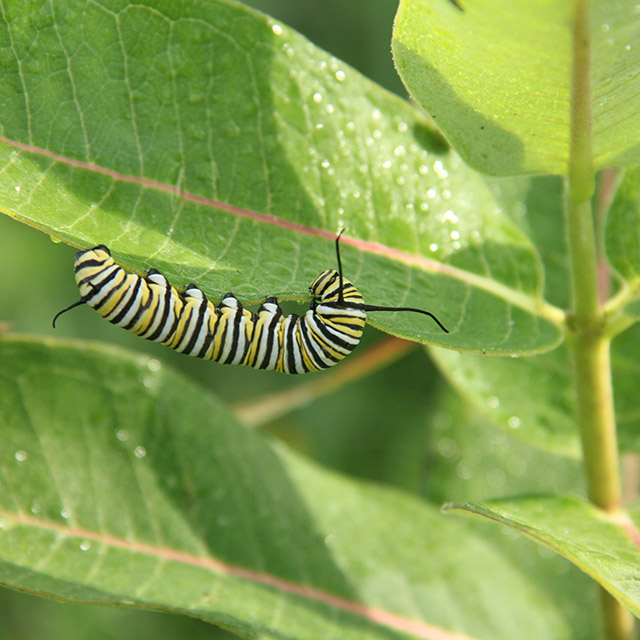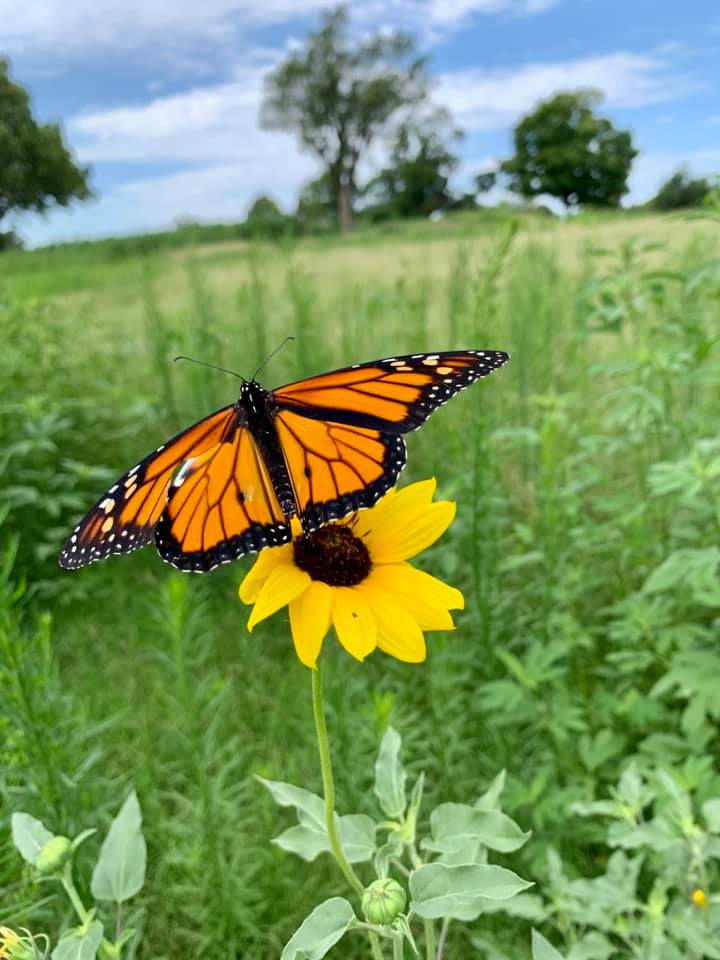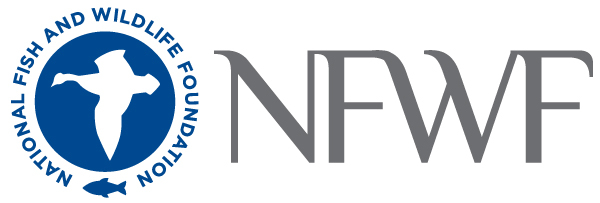Originally published by The Nature Conservancy in Oklahoma on behalf of Okies For Monarchs: http://www.okiesformonarchs.org/hole-in-one-for-monarchs/
Katie Hawk
Director of Marketing & External Affairs,
The Nature Conservancy
“On the golf course, I spend much of my time in the rough. I’d like to think that my swing takes me there to see the pollinators. The rough is the area outside of a fairway and is a fun place to bee if you like buzzing sounds and bright, colorful wildflowers. Not so fun if you’re keeping score. But that is one of the reasons I love golf – it’s a stellar opportunity for watching wildlife! Thankfully, my golfing buddy Billy has learned to appreciate my wandering about on the course.
And I’m talking more than just the infamous golf course squirrels y’all… we see deer, beavers, eagles, and lots of pollinators, including the monarch butterfly! I get so excited every time I see one. In fact, here’s a gorgeous female I saw in the rough at Ft. Cobb State Park Golf Course this past April while hitting a few clubs with my brother, Matt and caddie, Billy. Just kidding Billy, we all know you play golf. ? Did I mention that I won a golf tournament when I was 12? Just sayin’.
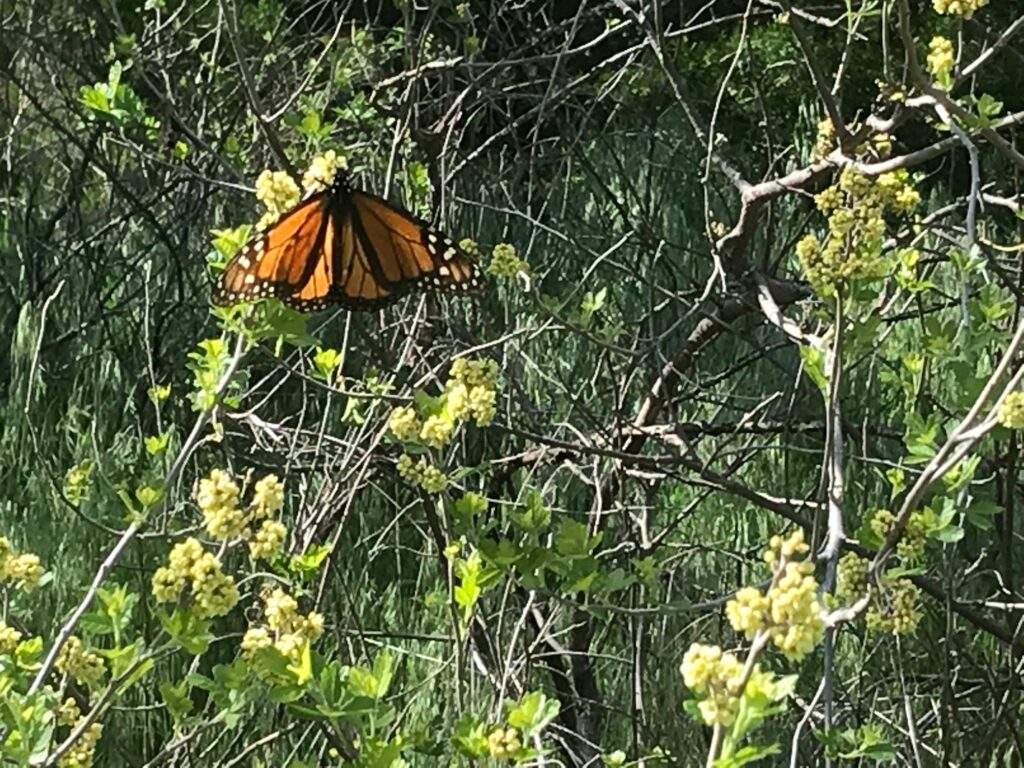
With my enthusiasm for golf and monarchs in mind, you can imagine how elated I was to meet Mike Kenna, with the U.S. Golf Association at the time, in 2016 during the Oklahoma Monarch Summit. There, he told me they were partnering with Audubon International to develop a program called “Monarchs in the Rough.” And! That Oklahoma golf courses would be receiving an invitation to participate. Fast forward to 2020 and guess what?! There are 13 courses in our great state taking advantage of this program and doing all they can to help save the monarchs! Giddy up! That’s something to write a blog about!
What is “Monarchs In The Rough”?
Glad you asked! It is an initiative of Audubon International and partners that demonstrates the conservation value of golf courses by creating and protecting pollinator habitat. Yes! We need more!!! Beginning in 2018, free milkweed and a mix of regionally appropriate native plant seed were provided to courses to plant at least one new acre of pollinator habitat. These sites increase the size of protected lands and compliment stewardship activities from other programs to provide contiguous passage from one block of habitat to another, benefiting resident butterflies and native wildlife. Isn’t this fabulous?!
So, why Oklahoma?
The I-35 corridor isn’t’ just a popular route for humans, it’s also frequently traveled by monarchs and has been identified as a priority area for increased butterfly conservation activities. Oklahoma occupies a critical place along the monarch migration pathway between Dallas and Kansas City. Go Oklahoma! Beat Texas! Oh wait, this isn’t a competition. It’s a collaboration! Go Texas, too!
Our great state links the initial generation of monarchs coming out of Mexico in the spring with the habitat needed by successive generations farther north in the Upper Midwest and East Coast. Without stopover sites, individuals could not fulfill their life history moving back across Oklahoma in the fall. The map below shows how centrally located Oklahoma is in the monarch migratory path.
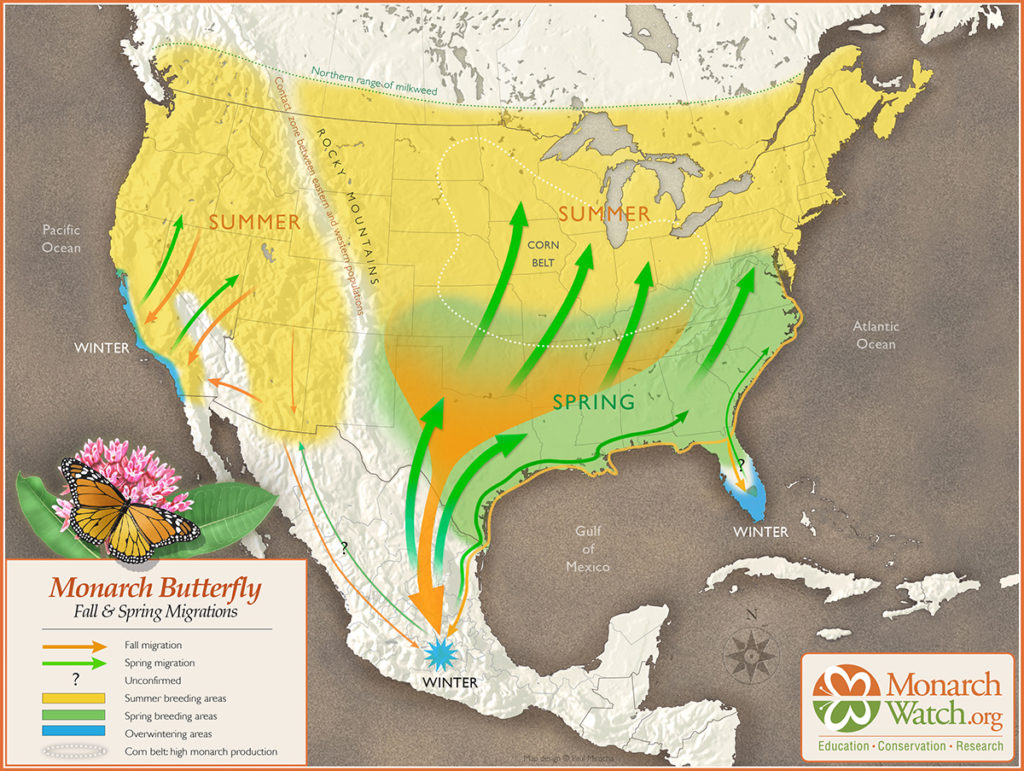
Golf courses act as a network of reserves to help monarchs move across the landscape and improve connectivity of the population. A great deal can be accomplished for butterflies in a small space and the golf course properties are as diverse as the state, touching on a cross section of farms, rangelands, forested hills, urban communities, lakefront resort areas and adjacent to tribal lands. A combination of public, municipal and private clubs are involved. These demonstration sites are seen by thousands of people every year as they play golf or enjoy other activities nearby.
Side note: Did you know that some golf courses offer other forms of recreation on the course such as kickball and walking? Yep! You may not even have to play golf to see the wildlife and habitat at your local course. Give them a call!
People that view golf plantings are inspired to establish wildflowers at home and in community spaces off the course. The average golf course represents 150 acres with more than 1/3 being available for restoration projects. Opportunities exist to expand butterfly habitat, through voluntary programs, on nearly 12,000 acres divided among the state’s 240 golf properties. That’s an average of approximately 50 acres per course if given adequate funding and guidance. Rock on!
What golf courses in Oklahoma are participating?
Now we’re talking! Let’s take a look at who these champions are that are helping plant the path for monarchs on Oklahoma’s golf courses! The participating sites stand across the state in a band from Sallisaw to Enid like a lifeline to boost monarch numbers with crucial steppingstones to get there from Norman and Oklahoma City.
Plant it and they will come!
The Monarchs in the Rough program is generating positive results! This handsome male monarch was spotted getting some nectar in August 2020 at the Oakwood Country Club golf course in Enid by Larry Taylor.
This is just too much fun ya’ll. Golfers are getting excited about pollinators! Can we have a toast to that!? If only my grandfather, Jimmy Dickson were still alive… I would so love to share this program with him and get his heart all aflutter. By no means, would he allow monarchs to overshadow his adoration of Chi-Chi Rodriguez, but he would certainly value my love of the environment and his love of golf metamorphosing into this stellar collaboration called Monarchs in the Rough.
But wait, there’s more!
The Monarchs in the Rough program is not only in Oklahoma, it’s nation-wide! Check out ALL the golf courses that are helping to save the monarchs!
How is your local golf course helping? Let them know about this program and encourage them to apply!
And! The Oklahoma Golf Industry just released a best management practices guide for natural resources that addresses everything from restoring floodplains to protecting pollinator habitat. That’s another great nugget to share with your local course!
Thanks for reading my blog y’all! Whether you’re golfing or monarch watching, I hope to see you on the course some day!
And a special thanks to the three men in my life who have shared the joys of golfing with me! Thank you brother, grandad and Billy!”

